This collection of leadership stories offers practical wisdom from experienced professionals who have faced and overcome significant challenges outside their comfort zones. Industry experts share candid accounts of transformation, from embracing vulnerability to building trust across global teams. Each narrative provides actionable insights on authentic leadership, strategic decision-making, and creating environments where teams can truly flourish.
- Speaking Hard Truths Transforms Coaching Relationships
- Holding Space for Truth Without Perfect Preparation
- Authenticity Trumps Sales Tactics With Clients
- Embracing Vulnerability During International Tax Crisis
- Leading Through Trust Across Global Time Zones
- Taking Responsibility When Client Expectations Fall Short
- Strategic Oversight Replaces Hands-On Project Management
- Passion Overcomes Fear in Public Speaking
- From Solo Contributor to Empowering Leader
- Leaving Comfort Zones for Human-Centered Education
- Direction Matters More Than Perfect Answers
- Building Bridges Between Different Business Cultures
- Letting Go of Control Empowers Team Growth
- Vulnerability Creates Space for Authentic Teams
- Creating Structure Within Uncertainty Builds Momentum
- From Numbers to People in Global Leadership
- Trust Teams While Focusing on System Results
- From Hands-On Expert to Inspirational Leader
Speaking Hard Truths Transforms Coaching Relationships
The moment that transformed how I thought about leadership was when I had to help a CEO client completely rethink her way of thinking, even though she was paying me to back up what she was already doing. She came to me feeling burned out and sure that she needed better ways to manage her time. What she really needed to hear was that her leadership style was making the turmoil she was attempting to avoid worse.
I’m not the kind of person who likes to fight. My instinct guides me to meet clients where they are and provide gentle assistance. But after three sessions, I knew that gentle wasn’t working and that her micromanagement style was making her company lose a lot of good employees. Her basal ganglia had gotten so used to controlling behaviors that small changes weren’t going to work. To really help her, I had to put the relationship on the line.
I told her straight out that she was the problem, not her team, and that her desire for certainty was making it hard for her prefrontal cortex to delegate well. It seemed like she was quiet for five minutes. I believed she was going to fire me right then and there. She started crying instead and remarked that no one had ever been that honest with her, not even her own board.
That event showed me that true leadership, especially in a coaching role, entails being willing to let go of the relationship in order to help the person grow. I was afraid of being rejected, not because I knew what she needed. Now, when I feel like I can’t say the hard thing, I lean into it instead of avoiding it. That’s when the big changes happen.

Holding Space for Truth Without Perfect Preparation
My biggest stretch as a leader was saying yes to a live, on-site “repair session” between a sales and ops team who hadn’t spoken plainly in months.
I’m a planner by nature. This was zero script, high stakes, executives in the back of the room. I drew a line down the whiteboard — “impact” on one side, “intent” on the other — then asked each person to name one concrete impact before explaining intent. Voices shook, a few tears came, and my job was to hold the heat: longer pauses than felt polite, a clear stop when blame crept in, and a firm ask to try again with specifics.
What I learned about myself is that I can lead without over-explaining. My steadiness regulates a room more than my cleverness, and boundaries are a form of care, not control. The teams left with two agreements, escalations halved in six weeks and I stopped hiding behind perfect prep.
Effective leadership, for me, is creating conditions where the truth can land and people still want to work together tomorrow.
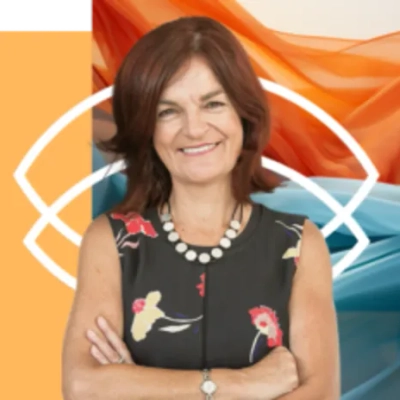
Authenticity Trumps Sales Tactics With Clients
A few years ago, I had to step in and give a major product presentation to a multinational client when our sales director fell ill. Sales and public speaking do not come naturally to me. In fact, I’m more at home working with materials, craftsmanship, and focusing on how our products are made. But, as I knew the product details inside out, I focused on these in the presentation, rather than trying to sound like something I am not: a professional salesperson.
Ironically, it seemed that worked in my favor. The client responded to my honesty and passion; they could hear I was genuinely proud of our work, of what we do and how we do it, and that I am genuinely involved in it. The experience taught me that leading doesn’t have to mean fitting the mold; sometimes it’s about showing up as you are and trusting your expertise to speak for itself. The experience changed my approach to client relationships. Now I encourage my team to do the same — to lean into what makes them genuine — rather than trying to be “salesy.” Authenticity builds trust faster than a perfect pitch ever will.
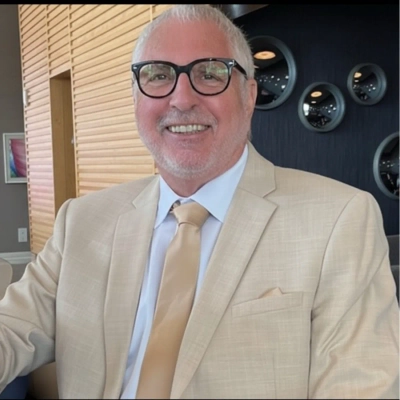
Embracing Vulnerability During International Tax Crisis
A defining moment that brought me out of my comfort zone as CEO was when I was working on a high-stakes international tax compliance project on behalf of a multinational client attempting to maneuver through post-pandemic supply chain difficulties. Heavy deadlines and multi-cultural team dynamics put me in a place where I felt out of my depth, and far beyond the structured accounting work that I was accustomed to doing in Canada, US, and Vietnam over 25 years.
My solution was to step up by delegating, having daily virtual huddles to keep our Hanoi and HCMC teams aligned, and finding the strength of empathy to overcome burnout, despite the fact that I second-guessed myself late into the nights. We met the deadline and found efficiencies that saved the client 15 percent in liabilities. In that chaos, I learned that my real strength is the adaptability of a resilient nature and trusting my intuition over perfection, revealing a more humanitarian leader who thrives on vulnerability to lead to collective wins, which have since strengthened my approach of navigating uncertainties in our 1,500-strong company.
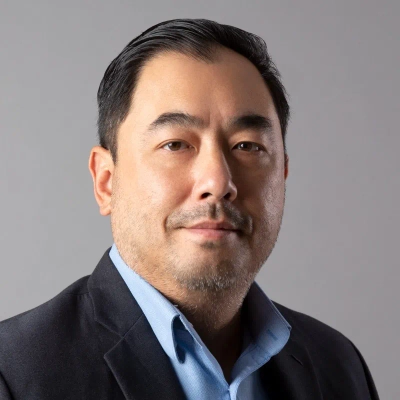
Leading Through Trust Across Global Time Zones
Stepping outside my comfort zone happened early in our growth, when I had to lead a team working across different time zones and adapt to schedules that were comfortable for each team member. I was used to direct, hands-on management — working closely with people in the same room. Suddenly, I had to learn how to lead through trust, structure, and clear communication rather than proximity.
At first, it was uncomfortable — I couldn’t rely on instinct or quick check-ins. I had to formalize processes, delegate more thoughtfully, and listen more intentionally to perspectives shaped by very different work environments. Over time, I realized that leadership isn’t about control; it’s about clarity and empathy.
That experience taught me to build systems that empower others rather than manage every detail myself. It also made me more adaptable — a quality that’s now central to how I lead a distributed team in a data services company that depends on precision, consistency, and human judgment across borders.

Taking Responsibility When Client Expectations Fall Short
Leading effectively means cultivating authority and a reputation. Meanwhile, sometimes the hardest things to do are the most critical ones when it comes to building a reputation and a business. For me, the toughest moments are those where you realize you’ve fallen short of your client’s expectations and need to address the situation head-on.
We’re fortunate that our company philosophy influences the types of clients we attract. We market ourselves as being ‘in the client’s corner’ and acting as a borderline in-house team. As such, our clients across the board treat us with respect and curiosity, a net benefit in good and bad times.
Years ago, one of our clients reached out over email after a status call, communicating they weren’t interested in highlighting our shortcomings in front of a larger audience, but our team wasn’t meeting their expectations. In short, as we expanded our business, things were falling through the cracks on his account.
This email, which I received while on my first vacation since starting the company, was beyond tough to receive. These types of situations are pivot points for client relationships. Sending an email back and taking responsibility is likely enough to carry you through the end of your contract, where the client makes a gut contract renewal decision based on “can I trust them long term,” where they inevitably lean towards no.
As tough as it was to lock back into work mode, it was even tougher to call the client and listen to their very legitimate, well-documented points about their dissatisfaction. I took responsibility, told them how I planned on fixing the issue, and I remained laser-focused on the account as the lead until I replaced myself with one of the advertising industry’s strongest account directors.
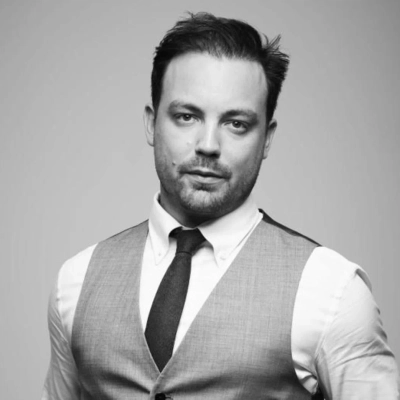
Strategic Oversight Replaces Hands-On Project Management
One moment that pushed me out of my comfort zone was shifting Sajiun Electric’s focus from general contracting to government infrastructure contracts in the 1990s. I was used to hands-on work and client-driven projects, but government contracts demanded navigating complex regulations, bonding requirements, prevailing wage laws, and multi-year project timelines.
Leading this transition meant stepping into strategic oversight, compliance management, and team coordination on a scale I hadn’t managed before. I learned that leadership isn’t just technical; it’s about embedding discipline, foresight, and process into every step. By developing internal systems to track compliance, ensuring financial discipline, and mentoring our team to uphold quality standards, we built a reliable framework that allowed us to win repeat contracts and maintain near-flawless delivery. That experience taught me that stepping outside your comfort zone can unlock growth for both yourself and your organization.
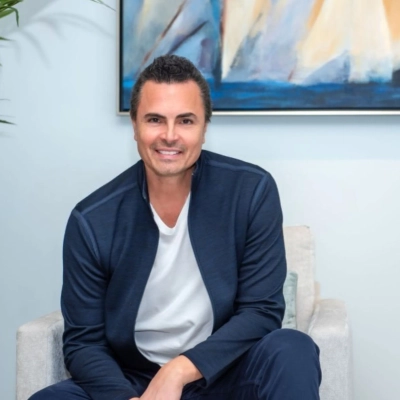
Passion Overcomes Fear in Public Speaking
When I started my company, I was far more comfortable behind a screen tweaking SEO campaigns than standing in front of a crowd. But when our brand was invited to host a live tea-tasting event, I knew saying no would hold us back. So, I stepped up, heart pounding, hands slightly shaking, and talked to dozens of strangers about oolong oxidation and aroma profiles.
What I learned that day was that leadership isn’t about expertise alone: it’s about energy. People connect to your passion more than your perfection. Stepping outside my comfort zone didn’t just grow our audience; it grew my confidence as a leader. Sometimes, the most powerful form of leadership is showing up when you’d rather stay hidden.

From Solo Contributor to Empowering Leader
Stepping out of my comfort zone came when I decided to move beyond freelancing on Fiverr and co-found my company. For years, I was comfortable working independently, handling projects on my own terms. But building a company meant shifting from being a solo contributor to leading a team, making strategic decisions, and being accountable not just for my own work — but for others’ growth too.
At first, it was intimidating. I had to learn how to delegate, trust others, and think long-term instead of focusing on just the next client or project. But that transition taught me a lot about leadership — that it’s not about having all the answers, it’s about empowering people, listening to their ideas, and growing together toward a shared vision.
That experience reminded me that real growth doesn’t happen in comfort. It happens when you take a leap, even when you’re not entirely sure where you’ll land.

Leaving Comfort Zones for Human-Centered Education
When I co-founded my business, I came from a background working in HR and marketing, not traditional education. So, to take on a role that had explicitly defined an opportunity to rethink the way children learn, basically globally, meant that I had to leave every comfort zone behind me. I was not in the position of redefining the way all children learn, and I needed to learn to speak the language of parents, teachers, and students not as a marketer, but as someone who was trusted by all to make the best decisions in their place.
One of my first tasks was to change the academic model, moving from a more traditional model to a more flexible, human-centered model. It wasn’t about making systems more flexible; it was about being empathetic. I used to spend hours in the old model being on calls with families across time zones and empathizing with their frustrations about inflexible schooling. The entire experience did not allow me to lead with authority, but with curiosity.
What I learned along the way is that being a leader does not mean having all the answers; it means making space for collective and better answers to arise. Leaving my comfort zone helped me to replace control with connection. And in that change, my company discovered its purpose as a school built not just for performance, but for people.

Direction Matters More Than Perfect Answers
I was a group leader of clinicians at the start of our faculty clinic where choices were required to be made at a rapid pace without the comfort of scholarly guidelines. I had to organize treatment plans in the fields of prosthodontics, orthodontics, and functional diagnostics and establish trust with other colleagues who belonged to other philosophies. It was an uncomfortable uncertainty, but it demanded that I listen more than speak, consider opposing views, and make decisions that were not necessarily well-tested.
The incident taught me that being a leader does not require one to have the right answer but to be responsible when it comes to direction. I found out that in some situations, clarity can be used instead of hierarchy, and that it is consistency that builds confidence, not certainty. I learned that human factors, such as patience and humility, can have more significant implications on long-term outcomes than the precision of science even in extremely technical dentistry.
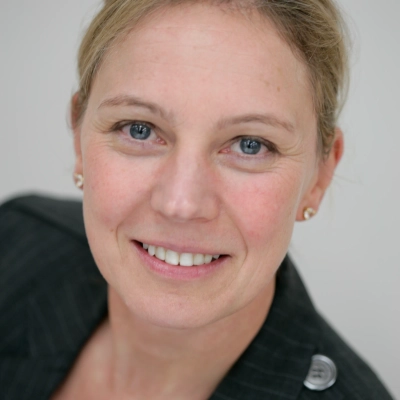
Building Bridges Between Different Business Cultures
A time that I really had to step outside my comfort zone was when I led a large partnership deal that brought several independently run businesses under one umbrella. Each team had its own culture, its own pace, and its own way of doing things. I’ve always been confident making deals and analyzing opportunities, but this required a level of diplomacy and patience I hadn’t needed before. I couldn’t just rely on numbers or gut instincts; I had to get people with very different perspectives to see a shared vision and trust one another.
I spent weeks meeting with each group, listening to their concerns, and finding common ground. Some days it felt more like counseling than business, but it taught me that effective leadership means understanding people as much as you understand the deal itself.
What I learned about myself was that I can lead through collaboration just as strongly as I lead through strategy. Stepping into that space forced me to slow down, listen deeply, and bring out the best in others rather than pushing my own ideas. That experience changed how I lead, with more empathy, patience, and respect for the human side of business.

Letting Go of Control Empowers Team Growth
When you are leading a growing business, stepping out of your comfort zone becomes a daily occurrence. For years, my comfort zone was doing almost everything myself. I built a career on being very hands-on in every project. It was most uncomfortable when I finally had to involve others in making high-stakes decisions. I was scared of letting my leadership team make choices that could have big effects without my input. Still, I knew it had to happen if we wanted the company to grow and scale.
Good leadership does not mean being in full control. Sometimes, you need to show confidence in your team. When my responsibilities shifted and I wasn’t the only problem-solver anymore, I saw how some of our leads managed to solve problems on their own. Sometimes their approach would surprise me because it was better and faster than I could have thought of. I’m still learning patience and humility in setting directions, especially without telling them every move to make. But when you see people step into leadership themselves and excel, it is proof for me that when I step back, others can step forward.
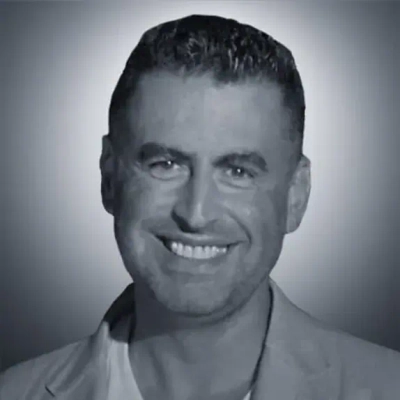
Vulnerability Creates Space for Authentic Teams
One thing that pushed me far outside my comfort zone was speaking publicly about my personal journey while leading growing teams at ROSM. I always believed that leaders should lead by example, but I was never taught to show vulnerability when I lead. I felt that being real with my team was extremely important, and that does not mean just about our goals and targets; it included everything that shaped who we are beyond our jobs.
Leadership is not just about having all the answers; it’s about creating spaces where people feel safe to bring their full selves to the table. Others also started to share about themselves when I shared about my journey. And that was the moment when I realized that there is no strategy better than being authentic, which could help build long-lasting trust.
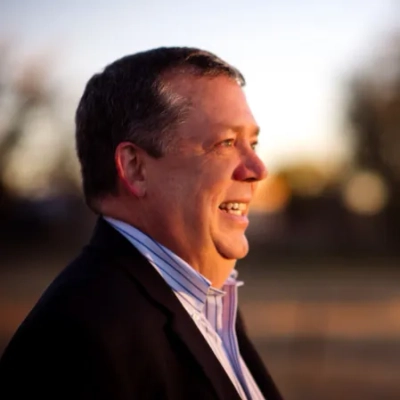
Creating Structure Within Uncertainty Builds Momentum
During a major service relaunch at our organization, I led a team through significant uncertainty. No locked timelines. No resource buffer. Just a solid roadmap and four capable people navigating unfamiliar territory. None of us had experience in a project this complex.
I work best within established systems, where structure helps me move quickly and confidently. This project had neither. I built the frameworks as we went, leaning on my team to validate decisions and adapt in real time. We worked with what we had and adjusted constantly.
What I learned: I can work effectively without predefined structure if I’m willing to build it during execution. A launched project with rough edges beats a perfect plan that never ships. I now understand that momentum and adaptive execution can often produce better results than rigid planning. The ability to start before you’re ready is a major competitive advantage.

From Numbers to People in Global Leadership
I’ve always enjoyed marketing stats and innovative concepts. However, when I co-founded my company, I had to do more than devise campaigns, I had to inspire people. Our workforce was located in various nations and across different time zones, something I was unfamiliar with. I was no longer staring at numbers; I was learning how to communicate with the actual people behind the tasks.
As a Co-Founder and Digital Marketing Strategist, I led a team consisting of designers, content writers, and technology specialists. Together, we assisted brands in employing creative merchandise to engage their audiences. There were occasions when things would go awry, such as production hiccups or last-minute campaign adjustments, and I needed to maintain my composure and help keep the group focused. I learned that leadership isn’t about perfection; it’s about helping people, listening to them, guiding them, and keeping them motivated.
I learned that good leadership involves being clear, kind, and confident, even when you feel uncertain about everything. I also discovered that I’m excellent at helping people believe in their ideas and feel good about their work.

Trust Teams While Focusing on System Results
The major enterprise project rebuild required me to leave my technical work behind and take charge of a team spread across three different time zones. The transition required me to move away from coding activities toward team coordination, backlog management, and stakeholder trust development while avoiding direct supervision of engineers.
Leadership requires more than possessing all solutions because it involves establishing clear direction and strong expectations while providing necessary support for team success. The experience taught me to trust others better while concentrating on achieving system-wide results instead of personal achievements.

From Hands-On Expert to Inspirational Leader
For years, I found confidence through my craft — connecting with clients face to face, reading their energy, and creating transformation in real time. Moving into a digital space meant I could no longer rely on touch or immediate feedback. I had to lead through vision, communication, and trust.
At first, it was uncomfortable. I was used to being the expert in the room — the one delivering results with my own hands. But leading an online team and community required a different kind of strength: the ability to inspire from a distance. I learned to delegate, to trust other professionals with the details, and to focus on creating systems and culture rather than performing every task myself.
That experience taught me that leadership isn’t about control — it’s about connection. It pushed me to embrace vulnerability, listen more intentionally, and communicate my vision with clarity and empathy. Most importantly, I discovered that confidence isn’t tied to proximity; it’s tied to purpose. When you lead from authenticity — whether in a treatment room or through a screen — people feel it.


